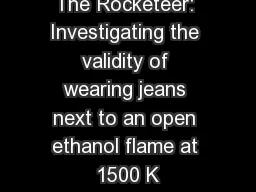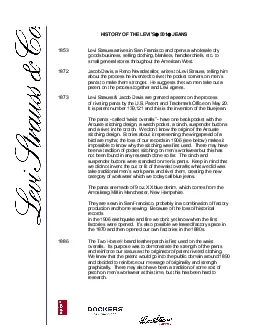PPT-The Rocketeer: Investigating the validity of wearing jeans next to an open ethanol flame
Author : aaron | Published Date : 2018-12-24
By Alan Bordon amp Ben Pace Introduction Problem In the 1991 Film The Rocketeer Cliff Secord stumbles upon a mysterious jetpack which he uses to fight the Nazis
Presentation Embed Code
Download Presentation
Download Presentation The PPT/PDF document "The Rocketeer: Investigating the validit..." is the property of its rightful owner. Permission is granted to download and print the materials on this website for personal, non-commercial use only, and to display it on your personal computer provided you do not modify the materials and that you retain all copyright notices contained in the materials. By downloading content from our website, you accept the terms of this agreement.
The Rocketeer: Investigating the validity of wearing jeans next to an open ethanol flame: Transcript
Download Rules Of Document
"The Rocketeer: Investigating the validity of wearing jeans next to an open ethanol flame"The content belongs to its owner. You may download and print it for personal use, without modification, and keep all copyright notices. By downloading, you agree to these terms.
Related Documents














